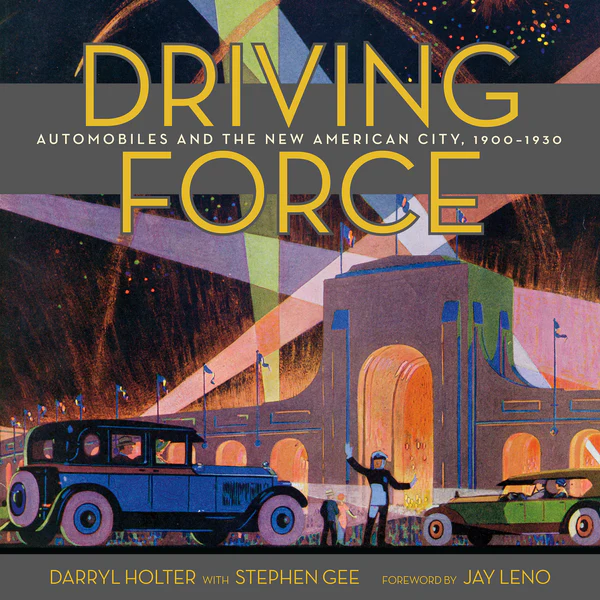
Driving Force: Automobiles and the New American City 1900-1930 (Angel City Press) explores how Los
Angeles’s enigmatic car culture propelled the explosive growth of America’s passion for cars. And with thoroughly researched text and page-after-page of vintage images, it shows how roadblocks that limited the sales of automobiles in the rest of the country, were eliminated in a new-thinking city in the earliest days of the car industry.
At the dawn of the twentieth century, as Los Angeles transformed from a rugged outpost to a booming metropolis, so too did the fledgling automobile simultaneously come of age. Ignited by an unlikely and visionary mix of entrepreneurs who ventured into unknown territory, early adopters broadened the market and convinced the public that cars were no longer a luxury—they were the ultimate modern necessity. From these early enthusiasts, men and women in various business recognized that the automobile would change society and wanted a piece of that action. The city’s auto business emerged initially among bicycle shop owners, carriage retailers, and automobile aficionados who started selling—and repairing!—cars. Their workshops thrived, expanded, and eventually became dealerships, the key component to the auto boom.
In this first major history of dealers at work—and one of the first books to chronicle the early history of cars in Los Angeles—authors Darryl Holter and Stephen Gee share the untold story of pioneering automobile dealers who seized the chance to join a start-up industry that reinvented an American city. Some became wealthy and powerful, others failed. But the lure of the automobile never wavered.
The L.A. dealers helped change the way cars were sold. They championed selling cars on credit while accepting“used cars” that buyers “traded in” so they could buy a new one. They introduced the West Coast to the concept of dealerships with service bays for on-site car repairs; persuaded manufacturers to design cars to their specifications and created custom vehicles and innovations that were copied around the country.
With more than 150 spectacular vintage images—many never before published—Driving Force brings to life the people who made the automobile an icon of the modern American city. In its pages, readers will discover how the story of the automobile is interwoven with Southern California’s unique topography and sun-drenched climate; a new era of women’s rights, and a growing female influence on automobile design; the creation of the Los Angeles Auto Show and the remarkable 1929 fire that threatened to destroy it; and how car dealers launched renowned L.A. radio and television stations, including KNX, KFI, and KCBS-KCAL.
As car collector extraordinaire Jay Leno explains in his Foreword to Driving Force, “Darryl Holter shows that auto retailers connected manufacturers to buyers, changing America and shaping the history, economy, and culture of Los Angeles.”
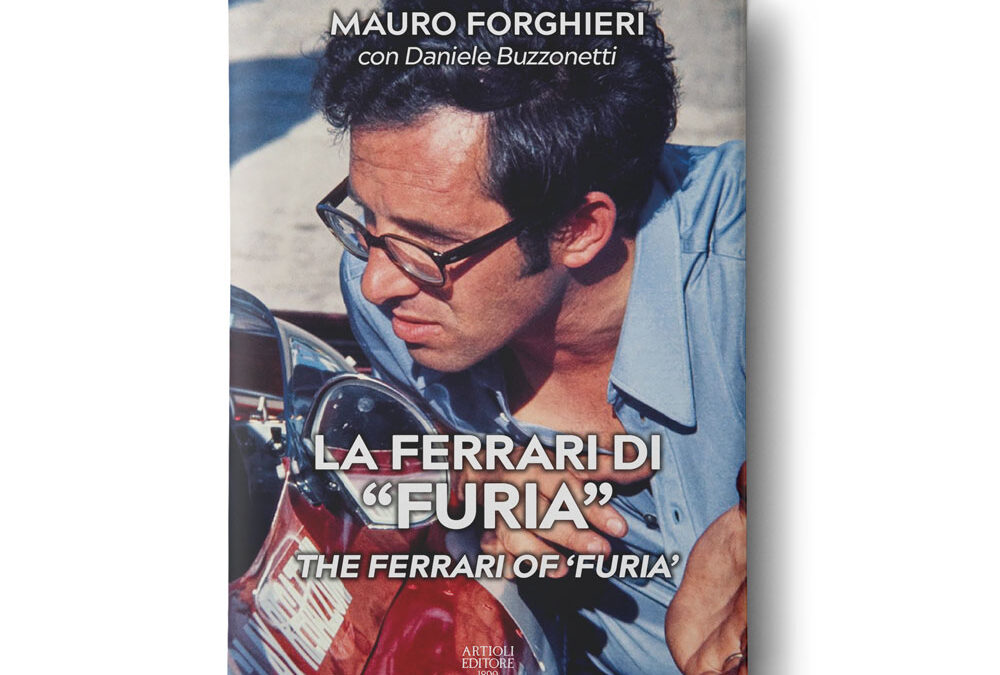
Always brilliant and clever, the engineer Mauro Forghieri seemed like a man out of time.
To enable a wider audience of enthusiasts to discover the fundamental role the engineer played at Maranello, from 1960 to 1987, we offer the story of his memories, which he himself dictated.
The history of Ferrari, as told directly by the engineer Mauro Forghieri, protagonist of the most exciting period of events linked to the Prancing Horse manufacturer.
It starts from the unpublished “Characteristic note” of June 1960, a sort of “report card” (with evaluations in Intelligence, Attitudes, Discipline, Attachment to Work, Culture), which concluded his three-month trial period, up to the resignation of the engineer himself on May 27, 1987, a year before the death of the legendary Maranello carmaker.
These were the years of great growth for Ferrari, the battle with Ford in endurance races, the legendary 312T taken to the highest level by Niki Lauda, the transition to turbo engines with Gilles Villeneuve. Numerous victories (54 world championship GPs and 11 Formula 1 Drivers and Constructors world titles), all with projects designed by engineer Forghieri, Ferrari’s “shadow man” and witness to everything that happened in the factory and on the racetracks.
An authentic Ferrari story, divided into forty-one chapters, unique because it was dictated and authorized by the renowned Italian engineer who sadly passed away on November 2, 2022.
· 272 pages
· Color and B/w Images
· Size: cm 17×24
· Languages: Italian & English
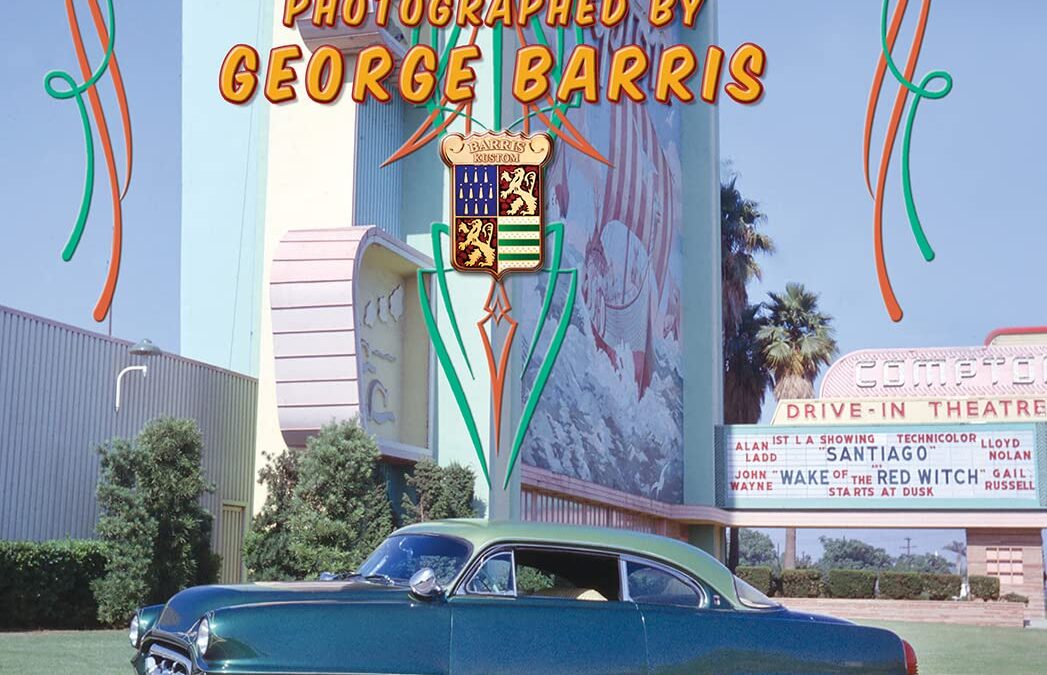
George Barris is indisputably the “King of the Kustomizers,” the most phenomenal kustom car builder ever.
This book collects the incredible photos of early hot rods and custom cars taken by George Barris in the 1950s to early ’60s.
As a sculptor of cars, George Barris knew well the angles and lighting that would bring out the beauty of these creations, both his own and those of others.
A treasury of images, the photographs in this volume capture the early parts of the kustom culture movement, when people wanted to stylize their cars and make them look more sleek, different, powerful and personal.
Early Hot Rod and Kustom Kulture features hundreds of photos including notable customizers from all over the country, in addition to Barris’ own creations. Many of these unique photographs have never been seen before. Barris also photographed the people and personalities of this iconic time, capturing builders and owners, as well as pinups and models.
George captured all the styles of the early era of customs and hot rods, both East Coast and West Coast, reflecting the wide range of trends and scenes. A beautiful collection seen through the lens of master customizer George Barris.
Kustom Photography
George Barris began making custom cars in the early 1940s with his brother Sam. George bought a German-made twin lens reflex Rolleiflex camera and began photographing cars as a way to promote his business. It then became a way to educate other kustomizers. George recorded and wrote how-to stories offering information and photos on kustomizing techniques, sharing his work as well as that of other builders from all over the country. George captured thousands upon thousands of moments in time when the beauty, style or sheer outrageousness of an automobile was visible only to a gathered crowd.
George Barris’ artful documentation of early car culture serves as an important chronicle of custom car history, capturing the best the best of burgeoning hot rod and kustom kulture.
His first work to appear in print was virtually concurrent with the beginning of auto enthusiast magazines known as “little pages” such as Hot Rod, Car Craft, Custom Cars, Hop up, Rod & Custom, Motor Life, Spotlite and others. Although much of his fame surrounds the incredible kustom cars he built, George’s endeavors as a photographer are just as important as any other facet of his life.
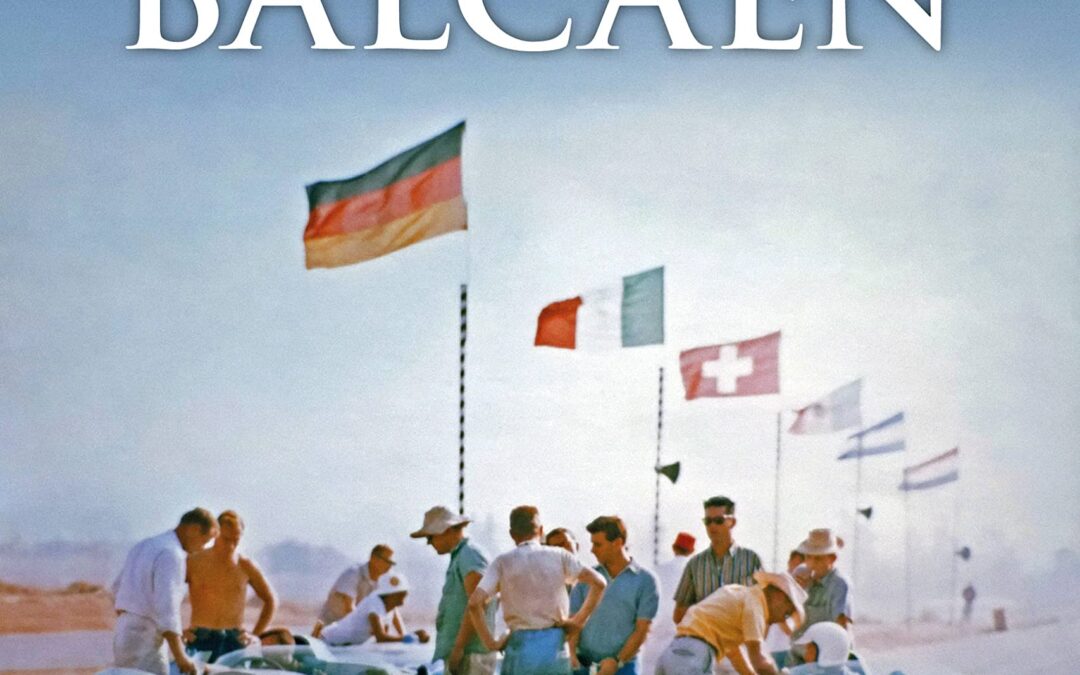
Raoul ‘Sonny’ Balcaen grew up in Los Angeles at a time when it became the epicentre of American motor racing, nurturing a vast talent pool of people whose influence has echoed through to today.
As a teenager, he successfully competed with his home-built Top Fuel dragster during the formative years of the sport. With Lance Reventlow, he worked on the famous Scarab sports cars and was standing in the dyno room when the team’s all-American Formula 1 engine was fired up for the first time. A period as Jim Hall’s crew chief and a close association with Carroll Shelby added to the know-how that guided him towards becoming a successful entrepreneur and led to all that followed.
- Aged 17, Balcaen built his own Top Fuel drag racer, the ‘Bantamweight Bomb’, which he developed relentlessly and drove to many successes.
- His role in the fabulous Scarab sports cars — the landmark all-American racers — and insights into life with their creator, the incomparable Lance Reventlow.
- Working as crew chief to the brilliant Jim Hall, preparing and running his Lotus Eleven and Lister-Chevrolet long before the famous Chaparrals emerged.
- A second spell with Scarab, this time with the Formula 1 project — the first American Grand Prix car — plus a special job for Reventlow converting a Scarab sports racer into a street car.
- Onwards into setting up his own successful business, IECO (Induction Engineering Co), to create and sell high-grade performance and appearance accessories, with Chevrolets — especially Corvair and Vega — featuring strongly.
- His many-faceted dealings with Carroll Shelby, leading to consultancy and even assignments as occasional Shelby American company pilot.
- Along the way we meet many other big names of the era, including Chuck Daigh, Bruce Kessler, Warren Olson, Dick Troutman, Tom Barnes, Phil Remington, Ken Miles, Leo Goossen, Jim Travers, Frank Coon, Ed Donovan and Pete Brock.
This engaging memoir is the very personal history of a momentous time and place in which we meet a who’s who of West Coast road-racing heroes.
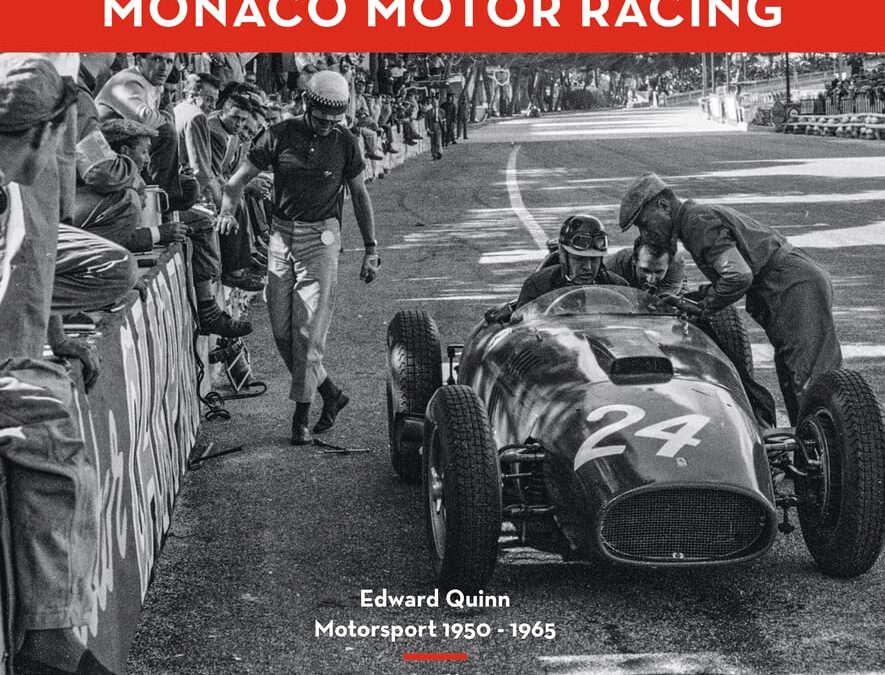
- Formula 1 of the 1950s and ’60s: images from a legendary era of motorsport
- Driver portraits, racing action and historic Formula 1 cars from Ferrari, Porsche, Alfa Romeo and Jaguar
- Over 270 photographs from Edward Quinn’s archive, some of which have never been published before
- Insights into post-war Monaco: lifestyle, glamor and celebrities
The Monaco Grand Prix is considered one of the most demanding races in Formula 1. Constant gear changes and the slowest corner in the world championship have always demanded everything from the racing drivers. Edward Quinn captured the most famous car race in the world from 1950 to 1965 in numerous photos. In his recordings, the well-known Formula 1 track is presented with almost no crash barriers and run-off zones, without advertising posters and sponsor logos. Many of his pictures are now combined for the first time in a large-format illustrated book. Accompanied by short descriptions and background information, they give a fascinating insight into the motorsport history of that time. Text in English and German.

This wonderfully illustrated, up-to-date guide to the natural, cultural, and historical gems hidden just off the legendary Route 66 outlines 30 trips for curious travelers.
Route 66 is arguably the
world’s most famous highway (more than 60% of Route 66 adventurers are from overseas!)—its motels, diners, and roadside attractions comprising a time capsule of America’s love affair with the automobile. While many of the road’s
iconic attractions have disappeared with time (along with large stretches of the road itself), others are as enduring as ever.
In this completely revised and updated version of The Backroads of Route 66, author and Route 66 expert Jim Hinckley is your guide from the lowlands of the American Plains to the high plateaus of New Mexico and Arizona, from the Great Lakes to the mighty Pacific Ocean, and through major metropolises and remote country towns.
But rather than take the road oft traveled and the sites most photographed, Hinckley encourages you to branch off the Mother Road and discover the hidden gems beyond today’s familiar motels and tourist traps—quaint frontier communities that date to westward expansion; the legacy of native cultures; and the awe-inspiring natural wonders that have graced these lands since time immemorial. There to be explored within a few hours’ drive from the path of Route 66, discover:
- Outdoor attractions
- Museums
- Historic sites
- And much more
The thirty trips in The Backroads of Route 66 offer new travel opportunities for you and the thousands of road-trippers who follow this legendary route, looking for something more.
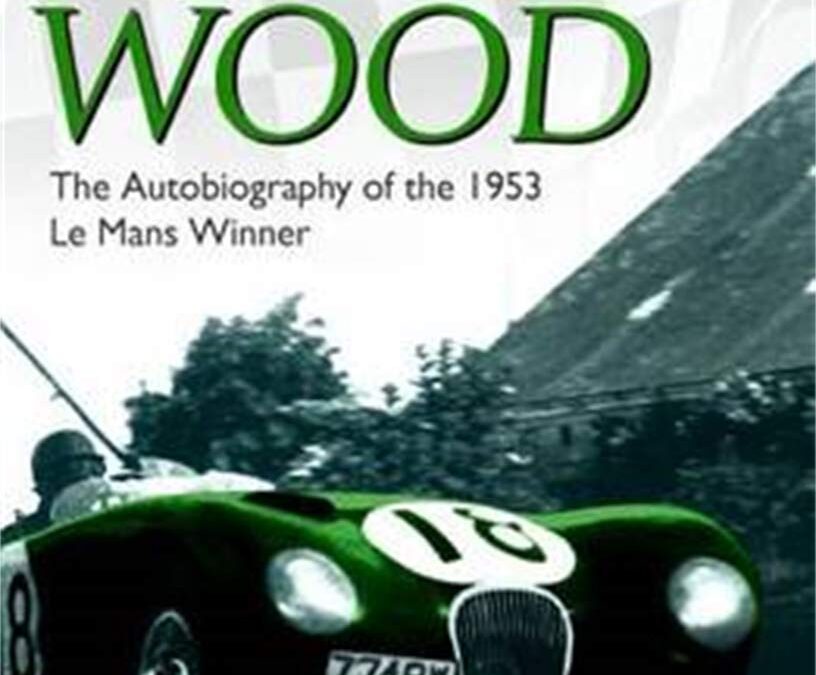
Duncan Hamilton won the classic Le Mans 24-Hours race in 1953, co-driving his workcentered C-Type Jaguar with Tony Rolt. In 1954 the same pair finished second, losing to a much larger-engined V12 Ferrari and by the narrowest margin in years. In all, Duncan Hamilton competed in nine of those great Le Mans endurance classics. Having cut his racing teeth in such pre-war cars as the R-Type M.G and the Bugatti Type 35B, Duncan graduated to one of the immortal Lago- Talbot Grand Prix cars—which he subsequently mislaid in a French coal-hole. After a hugely eventful racing career—only Duncan could get himself fired by Jaguar for winning the Rheims 12-Hours race in 1956—he eventually hung up his racing helmet in 1958. As Earl Howe wrote in the original 1960 foreword to this book, though the drivers of this age were fiercely competitive, there were also “friends to meet, stories to tell and almost certainly a party to be enjoyed…” Duncan Hamilton was certainly a little larger than life, and this book tells the story of a man who wasn’t just one of the most successful drivers of the 1950s, but also the man who trespassed at Brooklands, who spent the war in the Fleet Air Arm accidentally trying to drown American Admirals, and who was once stopped for speeding on the Cromwell Road, rushing to take part in a TV program on road safety. It is a must for any classic car enthusiast’s bookshelf.
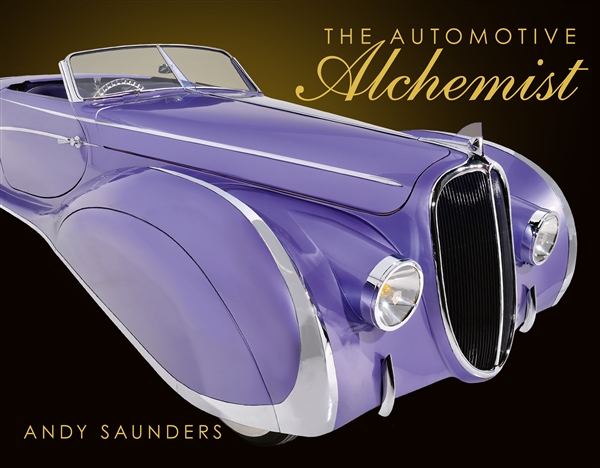
Andy Saunders’ ‘Automotive Alchemist ’ is a roller-coaster ride through the highs and lows of this charismatic man’s life. From the early years of learning the basic skills of cutting and shaping metal then painting and airbrushing, to his mature creations, restorations and the inherent genius of his designs. Andy welcomes us into his workshop and his head: not afraid to express his emotions, as he deconstructs and then rebuilds each vehicle, he lays bare his motivations, inspirations, influences, and passions. Intertwined in the narrative is the work involved in the creation of 60 cars, described here with many detailed photographs.
Forty-two of Andy’s creations now reside in museums and private collections across the globe but the most unusual fate is that of Flat Out, the Guinness Book of Records acclaimed Lowest Car in the World, which is now a coffee table in the foyer of a huge Californian corporation.
The book is not a technical ‘how to create wild custom cars’ manual. Rather it is a celebration of Andy’s joy of creation and his design genius, though tempered by personal traumas and losses. He has, on many occasions, been referred to as the British George Barris, the American “King of Kustomizers.” Unlike many biographies, this book engages the reader with its honesty and humour.
Andy Saunders grew up in Poole on the south coast of England and developed an early relationship with the building and customising of cars. His first project was finished before he was old enough to hold a British driving license.
Since that first project, his journey to become Britain’s leading and most recognisable ‘Car Artist’ has evolved. With his painstaking attention to detail and his knowledge of the styling masters from bygone eras, his creations have always been unique and, occasionally, controversial.
Never shy of turning his ideas into reality or taking unexpected opportunities to fruition, Andy has, on occasions, thrown away the accepted rule book and created some truly amazing vehicles: making a Citroën CX into a road-legal alien craft; turning Ford’s 1958 X-2000 ‘car of the future’ model into a full-sized reality and creating a Cord coupe that the factory would have been proud to call their own.
Andy has three Guinness Book of Records certifications: twice for the ‘lowest car in the world’ and once for the ‘lowest van in the world’ which remains unbeaten and has been approached by film companies and undertaken commissions for major car manufacturers. But mostly he builds whatever has inspired his creative juices from lowriders, Incantation, to shortened Minis, Mini Ha Ha; from restyling a Bentley Mulsanne, which was acclaimed by the Rolls-Royce and Bentley Owners Club as “the most beautiful coachbuilt Bentley to have been built since WWII”, to a 2CV inspired by Picasso – Picasso’s Citroën; and from his drivable version of Bertone’s Lancia Stratos Zero to his Art Deco creation of a rare 1939 Peugeot, Metropolis, inspired by Fritz Lang’s 1927 masterpiece of the same name.
During the past four decades Andy has restored Cord, Pontiac and Rolls Royce vehicles. Rescued and restored the unique and much-maligned 1957 Aurora Safety Sedan and realised an affinity with the great designer Alex Tremulis. Andy’s creations have appeared in exhibitions, on television and in magazines as far afield as Australia, Korea, America, the UK and Europe and many of his vehicles nowadays reside in museums and collections from California to Japan and from Europe to the Middle East.
And so to his latest masterpiece, Déjà: inspired by a 1930’s popular French girls name, some body panels he didn’t want or need and the pinnacle of French coachbuilding, Andy has created this Delahaye, a hand-built steel roadster. This beautiful cross between Joseph Figoni’s 165s and Jacques Saoutchik’s 175 somehow appears to be some eighty-five years late for her debut at the Paris Salon de l’Automobile.
- 464 pages
- Hard cover with dust jacket
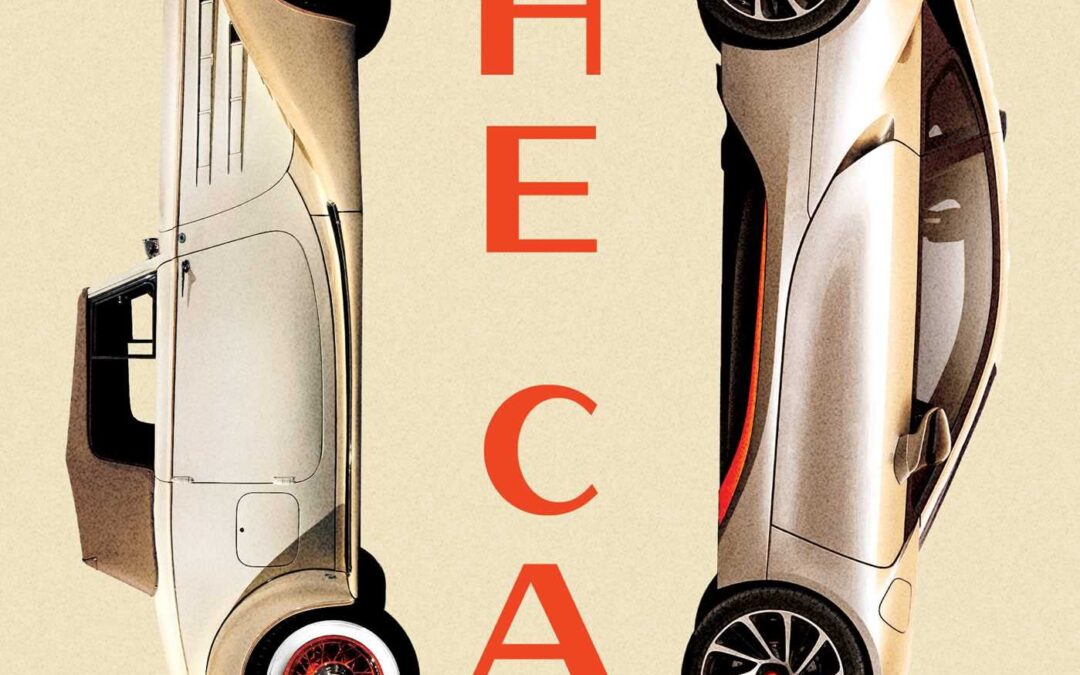
A spirited, insightful exploration of our favorite machine and it’s cultural impact on society over the past one hundred and fifty years.
More than any other technology, cars have transformed American popular culture. Cars have created vast wealth as well as novel dreams of freedom and mobility. They have transformed our sense of distance and made the world infinitely more available to our eyes and our imaginations. They have inspired cinema, music and literature; they have, by their need for roads, bridges, filling stations, huge factories and global supply chains, re-engineered the world. Almost everything we now need, want, imagine or aspire to assumes the existence of cars in all their limitless power and their complex systems of meanings.
This book celebrates the immense drama and beauty of the car, of the genius embodied in the Ford Model T, of the glory of the brilliant-red Mercedes Benz S-Class made by workers for Nelson Mandela on his release from prison, of Kanye West’s ‘chopped’ Maybach, of the salvation of the Volkswagen Beetle by Major Ivan Hirst, of Elvis Presley’s 100 Cadillacs, of the Rolls-Royce Silver Ghost and the BMC Mini and even of that harbinger of the end—the Tesla Model S and its creator Elon Musk.
As the age of the car as we know it comes to an end, Bryan Appleyard’s brilliantly insightful book tells the story of the rise and fall of the incredible machine that made the modern world what it is today.
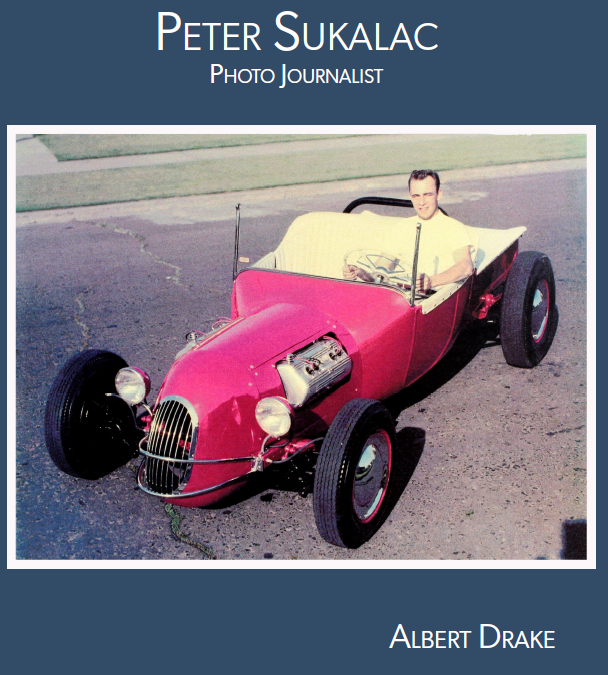
Peter “Pete” Sukalac was a professional photographer who made a career of photographing machines: hot rods, custom cars, race cars, boats, go karts. He appreciated style and craftsmanship. His photos appeared in the pages and on the covers of the slick magazines of the day: Hot Rod Magazine, Rod & Custom, Boating, and Auto Mechanics. He eventually founded, financed and contributed to his own publication, Northwest Rods.
There was such an abundance of material during the 1950s and 1960s, and Pete sought out the best, the cream of the crop. In doing so, he put Northwest builders and machines on display, and they measured up to the best from California, the Mecca of hot rodding and racing.
“If Sukalac had not documented cars and people in the Northwest, it might seem as if nothing had happened in this area.”
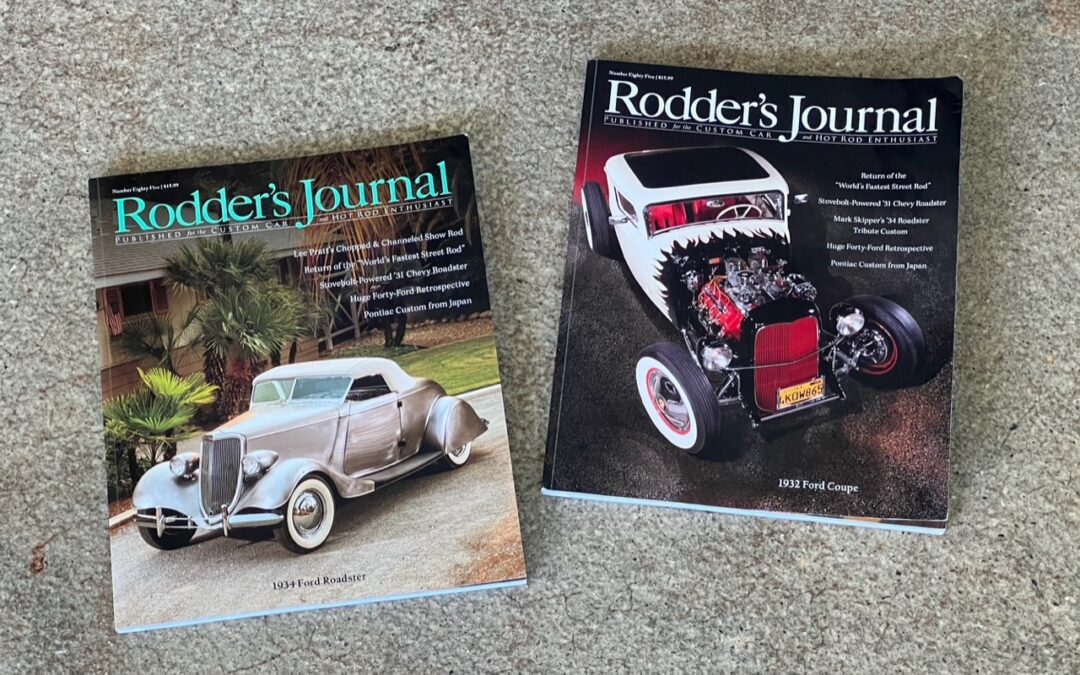
THE RODDER’S JOURNAL IS BACK!
Our subscriber cover features Lee Pratt’s newest creation—his long-in-progress, much anticipated 1932 Ford five-window show rod. On the newsstand cover is the baremetal ’34 Ford roadster Mark Skipper has crafted as a tribute to the renowned Wes Collins custom from the 1950s.
While we consider every issue of TRJ special, #85 is especially close to our hearts. The content is as diverse and unique as any previous issue, running the gamut from newly completed traditional hot rods and customs, a restored street/strip legend, an expansive retrospective on some of the most significant Forty Fords ever created, and a healthy dose of history like readers have come to expect from TRJ. Beyond the subject matter, the contributors you’ll see named in by-lines and photo credits include some talented freelancers like Tim Sutton and John Jackson, as well as TRJ alums Greg Sharp and Pat Ganahl—the latter of whom dusted off his keyboard and emerged from retirement to take part in this somewhat historic issue of The Rodder’s Journal.

THE RODDER’S JOURNAL IS BACK!
Our subscriber cover features Lee Pratt’s newest creation—his long-in-progress, much anticipated 1932 Ford five-window show rod. On the newsstand cover is the baremetal ’34 Ford roadster Mark Skipper has crafted as a tribute to the renowned Wes Collins custom from the 1950s.
While we consider every issue of TRJ special, #85 is especially close to our hearts. The content is as diverse and unique as any previous issue, running the gamut from newly completed traditional hot rods and customs, a restored street/strip legend, an expansive retrospective on some of the most significant Forty Fords ever created, and a healthy dose of history like readers have come to expect from TRJ. Beyond the subject matter, the contributors you’ll see named in by-lines and photo credits include some talented freelancers like Tim Sutton and John Jackson, as well as TRJ alums Greg Sharp and Pat Ganahl—the latter of whom dusted off his keyboard and emerged from retirement to take part in this somewhat historic issue of The Rodder’s Journal.
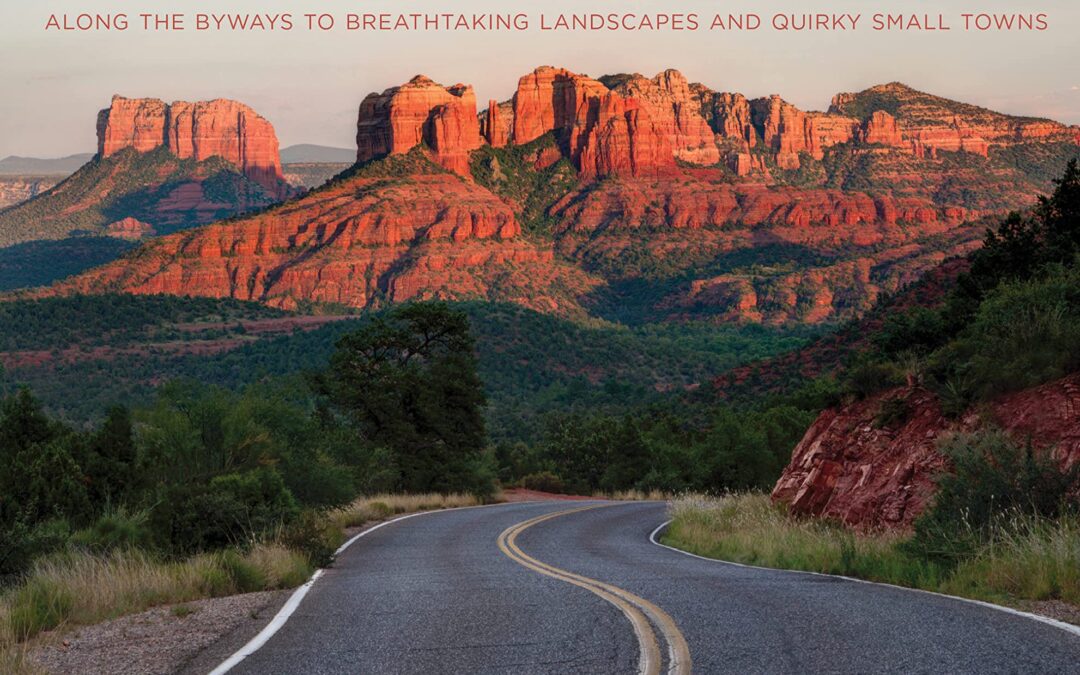
Explore the wide open spaces of Arizona with this guide to roads less traveled and awe-inspiring sights less seen.
Backroads of Arizona guides you into the heart of Arizona’s sun-shiny beauty and fascinating history. In this thoroughly updated edition, you’ll find twenty-five driving tours and adventures that take you off the beaten path to stunning landscapes and breathtakingly beautiful vistas. Marvel at the multicolored hues of the Painted Desert and the jaw-dropping majesty of the snowcapped San Francisco Peaks. Wander into a sky-high forest of regal ponderosa pines and quaking aspens near Flagstaff, scan the deep blue waters of Lake Havasu on the western border, and feel dwarfed by the incredible Grand Canyon. With scenic drives in all corners of the state, Backroads of Arizona offers insight into Arizona’s rich history, from the Spanish conquistadors seeking the legendary cities of gold to the Wild West shootout at Tombstone’s OK Corral.
Thanks to the maps and directions to the Grand Canyon State’s unique scenic, historic, and cultural attractions, you can explore prehistoric cliff dwellings, hike to see a mountainside of cacti in bloom, or get your kicks on Route 66. This second edition includes new routes along timeless roads, with fresh images and pithy stories of what can be found along the way. Discover something off the beaten path, and make memories you’ll never forget.
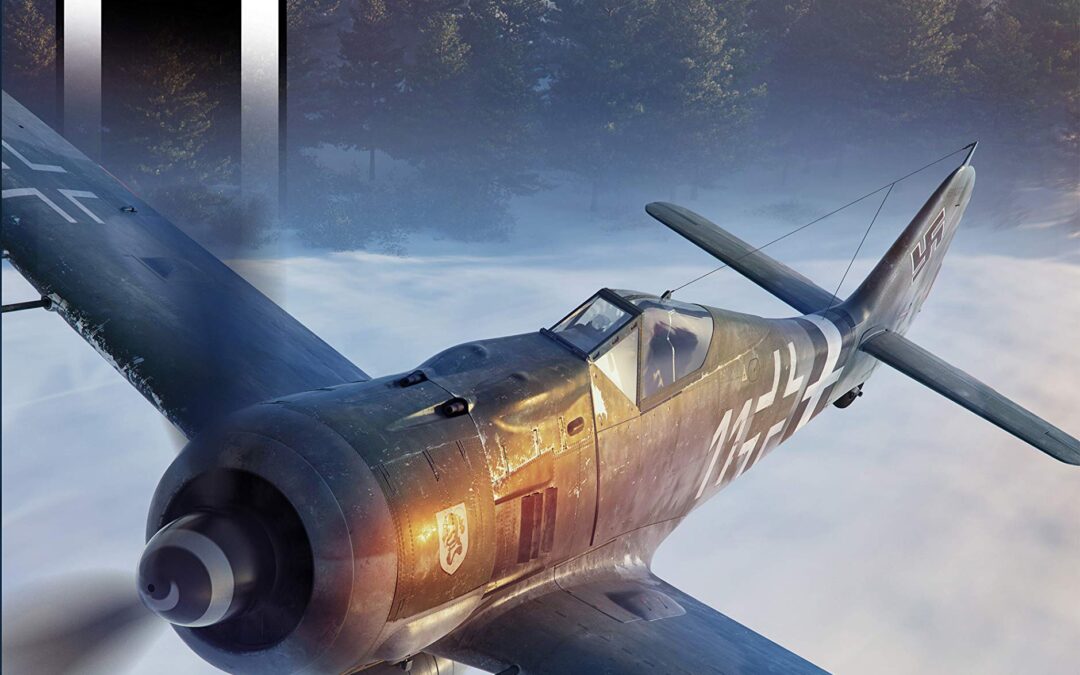
When it appeared in the skies over Europe in 1941, the Focke-Wulf Fw 190 A was the best fighter in the world. It was more than a match for the best Spitfires the RAF could field and began shooting them down in ever-increasing numbers. Only the introduction of the Spitfire IX with its two-stage supercharged Merlin overturned its supremacy.
Alongside the Messerschmitt Bf 109, the Fw 190 is the iconic fighter of the Luftwaffe during the Second World War. It was hugely adaptable and fought on nearly all fronts, proving to be a formidable opponent.
The Fw 190 F and G fighter-bombers effectively replaced the Ju 87 Stuka in the ground-attack role in the west and provided the Luftwaffe with much-needed additional capability.
The Fw 190 was used for the Mistel flying bomb combination and as a test aircraft for the Ruhrstahl X-4 wire-guided air-to-air missile, and in its Fw 190 A-8 and A-9 forms fought on the front line right until the bitter end.
This book tells the story of the legendary fighter with previously unseen drawings and photos which shed new light on the aircraft’s origins.
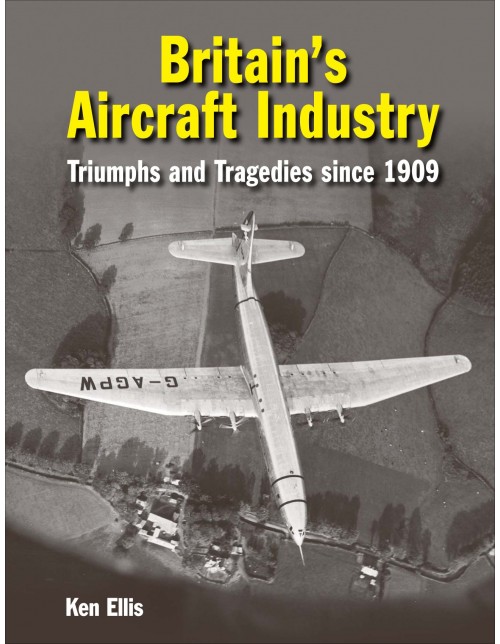
Britain established the world’s first aircraft factory in 1909 after the Short brothers met up with the American Wright brothers and struck a deal. The industry expanded rapidly to rise to the challenge of World War One with such thoroughbreds as the Camel and the SE.5. The post-conflict slump proved to be difficult but classics such as the Moths, the Hart family and the Gladiator maintained Britain’s leadership. Another war loomed and iconic types such as the Hurricane, Lancaster, Mosquito, Spitfire and the Meteor jet appeared.
With the return of peace over 20 major manufacturers faced inevitable contraction. The misguided Bristol Brabazon airliner was a dead end but the superb de Havilland Comet and Vickers Viscount led the field. Canberras, Hunters, Lightnings and the V-bombers met the Cold War confrontation.
For the first time here is a readable, highly-illustrated, examination of the entire industry; its heritage and the changes it faces in the 21st century, both technical and political. The life and times of the 40 ‘big names’ from Airbus to Westland: aircraft, designers, factories, failures and successes, mergers and closures are all explained, supported by statistical tables and copious illustrations. Here is a celebration of a world class industry that remains at the cutting edge of excellence.
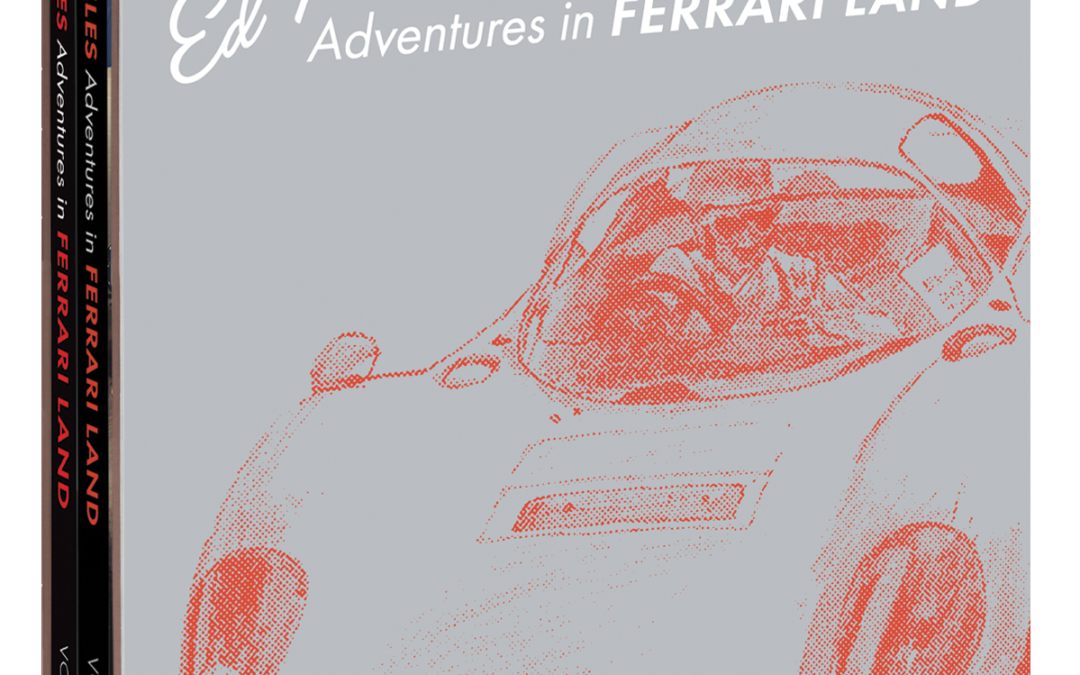
The greatest vintage Ferraris carry stories with them, and part of the value of each unique car is the depth and richness of its history. Edwin K. Niles has been buying and selling Ferraris for most of his life, and the more than one hundred that passed through his hands include some of the most storied and rare examples in existence.
This lavish two book set covers the cars and writings of Niles, offering Ferrari enthusiasts an intimate look into the heritage of some of the world’s most desirable collectible Ferraris.
In Volume 1, Niles recounts his encounter with each car, touching upon the its history and including colorful stories such as how he discovered a 1954 250 Europa Coupe in an underground storage garage while on holiday in Italy and bought it immediately after the owner took him on a screaming ride through the narrow streets of Rome.
The stories of Ed and his cars take you on a ride through Ferrari history, meeting the historians, collectors, and celebrities who live and breathe the cars that bear the prancing horse.
Volume 1 of this set includes a complete inventory of all the Ferraris owned by Niles, with archival photography, drawings, records, and entertaining stories about each one.
Volume 2 collects Niles’s writings about Ferrari, including his colorful column, “Oldtimer’s Corner,” that ran in the FCA Southwest Region’s Sempre Ferrari. Included on those pages, are accounts of a ring of Italian car counterfeiters, the Berlinetta in the barn, the ill-fated but fast Dino, and more tales of living and loving Ferrari.
In short, if you love and live Ferrari, this two-volume set is a must.
2 Volumes in slipcase
372 Pages
12 × 12 × 3.5 in
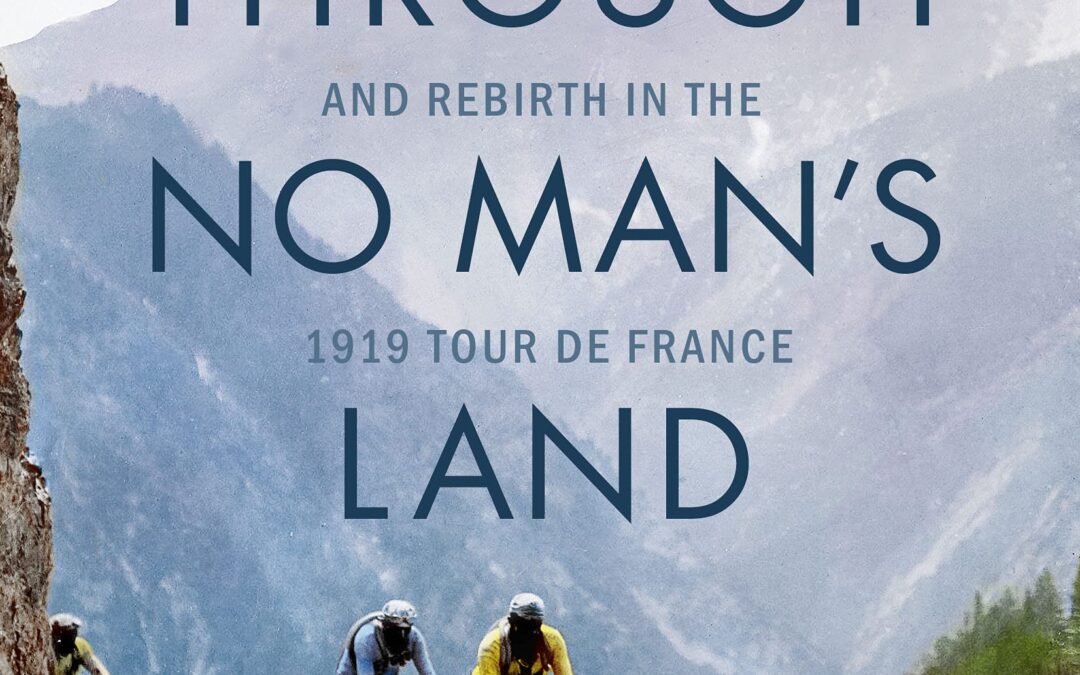
The inspiring, heart-pumping true story of soldiers turned cyclists and the historic 1919 Tour de France that helped to restore a war-torn country and its people.
On June 29, 1919, one day after the Treaty of Versailles brought about the end of World War I, nearly seventy cyclists embarked on the thirteenth Tour de France. From Paris, the war-weary men rode down the western coast on a race that would trace the country’s border, through seaside towns and mountains to the ghostly western front. Traversing a cratered postwar landscape, the cyclists faced near-impossible odds and the psychological scars of war. Most of the athletes had arrived straight from the front, where so many fellow countrymen had suffered or died. The cyclists’ perseverance and tolerance for pain would be tested in a grueling, monthlong competition.
An inspiring true story of human endurance, Sprinting Through No Man’s Land explores how the cyclists united a country that had been torn apart by unprecedented desolation and tragedy. It shows how devastated countrymen and women can come together to celebrate the adventure of a lifetime and discover renewed fortitude, purpose, and national identity in the streets of their towns.
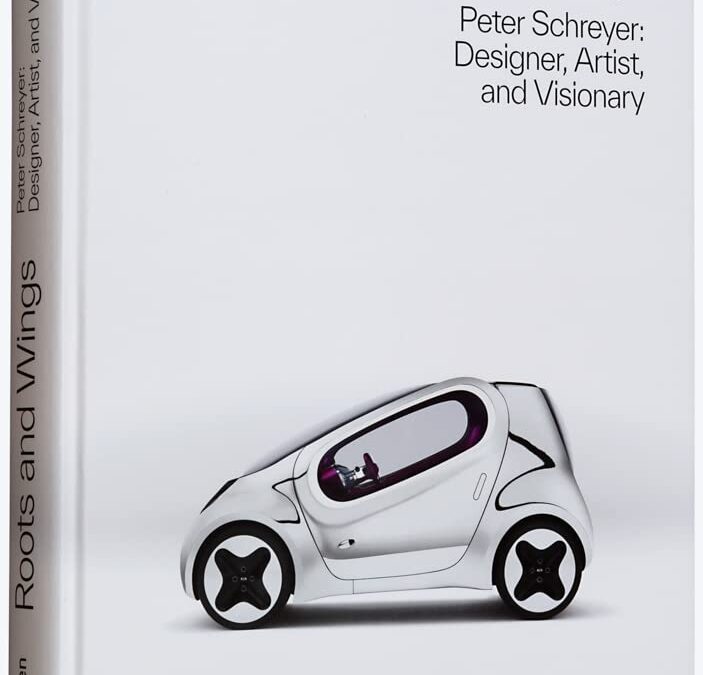
Roots and Wings explores the life and work of Peter Schreyer, one of the most influential car designers of our time. A Renaissance man with an eye for detail and foresight for innovation, he geared himself toward success. Responsible for the births of some of the 20th-century’s most iconic cars, his industry experience brought instant classics to the road. From humble beginnings in Germany’s divided south to his new base in Seoul, Schreyer embodies a conduit between the west and east―bridging his homeland’s history of automotive design with South Korea, a country that has experienced stratospheric growth on the world stage in just a few decades. Looking at the formative moments and pivotal artistic discoveries that shaped his creative mindset, Roots and Wings is the never-before-told story of how a man reimagined a car brand and left a mark on history in the process.
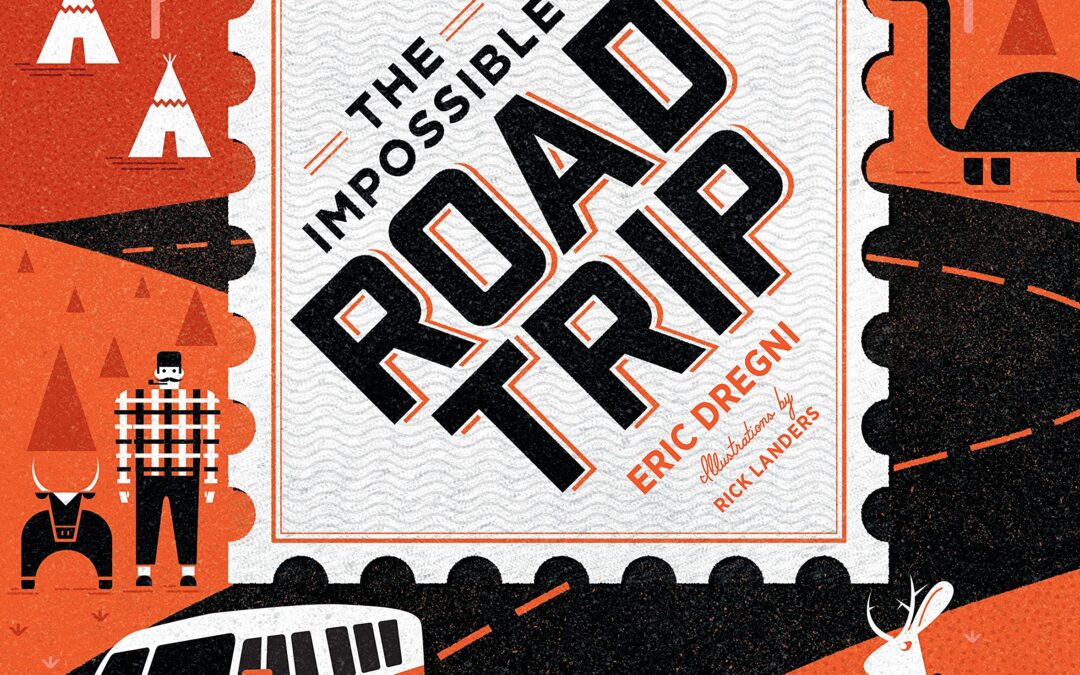
Filled with color photography, entertaining site descriptions and histories, and five unique infographic map illustrations, The Impossible Road Trip is your ultimate look back at America’s most famous—and quirkiest—roadside attractions, past and present.
The great American road trip is back. With its advantages for your health, budget, and the environment, now is the time to plan the road trip you have always dreamed of taking.
Following in the great tradition of the mid-century golden age of car travel, join the new wave of road warriors with a targeted itinerary chosen from the 150 roadside attractions explored in this colorful guide. From famous to quirky and covering all 50 states, author Eric Dregni gives you an unprecedented look at the breadth of roadside attractions in the US, illustrated in part by the photography of architectural critic and photographer John Margolies (1940–2016). Specially commissioned infographic map illustrations capture the spirit of mid-century automobile travel.
Each site depicted is accompanied by a lively and insightful history and color imagery. From autumnal New England to the gothic South, from the homey Midwest to the great expanses of the Desert Southwest, the dizzying heights of the Rocky Mountains, and the breathtaking Pacific Coast, The Impossible Road Trip encompasses it all:
- Neon-shrouded motels
- Mimetic architecture
- Tourist traps
- Roadside sculpture
- And much more
You’ll see sites both famous and esoteric, including the Cardiff Giant in Cooperstown, New York; the five-story Haines Shoe House in York, Pennsylvania; Solomon’s Castle in Florida; the world’s largest fish in Hayward, Wisconsin; one of several Paul Bunyan statues; Bob’s Big Boy in Burbank, California; and so many more.
With The Impossible Road Trip in hand, set out to discover the nation’s oft-overlooked nooks and crannies.
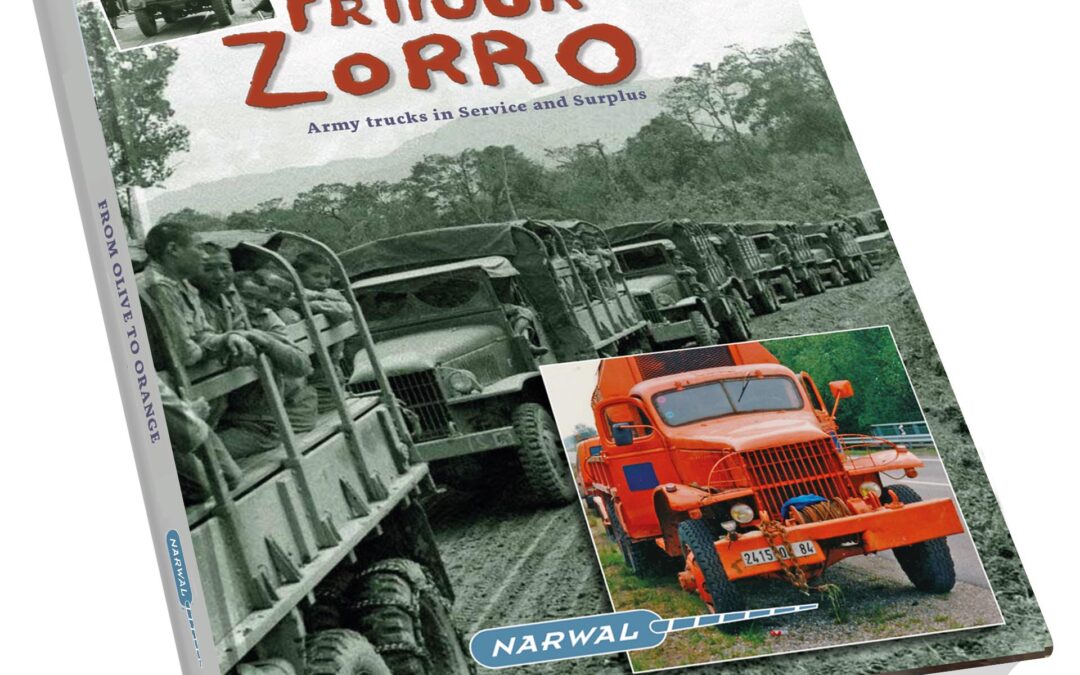
‘From Olive to Orange’. The collection of photos from Lucas Beaujon who travelled through western Europe for decades. Rare photos of different roles for WW2 trucks plus chapters and photos about the surplus of vehicles immediately after WW2. (the USA built 500 GMCs per day and continued to do so for some time thereafter!). Also many photos of these vehicles IN the war, Allied and German. The book has therefore historical value. 520 pages! Language: English.





















